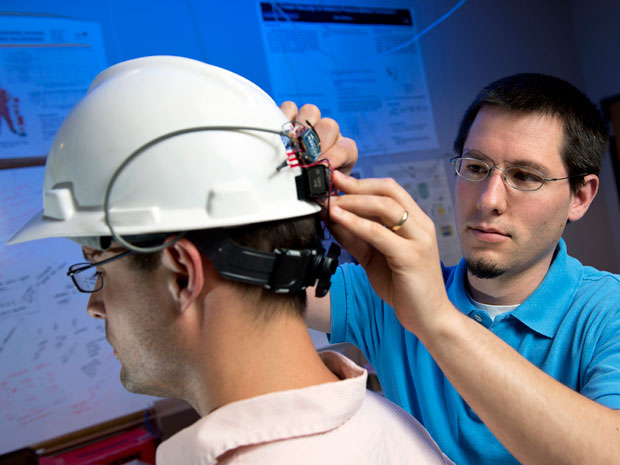Hard-Hat Sensor Short-Circuits Carbon Monoxide Poisoning (IEEE)

During the 1990s, nearly 100 American workers died from suffocation injuries; twenty percent of these succumbed to carbon monoxide poisoning, usually from operating gasoline-powered tools in confined spaces. CO suffocates its victims by tying up oxygen-transporting sites in hemoglobin, preventing oxygen from reaching the body. CO poisoning is insidious, quickly producing nausea, fatigue, headache, and disorientation, followed by unconsciousness and, too often, death.
One or two deaths a year is not a big number—unless you are one of the one or two, or a member of their families. Extending the electronic measurement of our lives into the workplace, researchers at Virginia Tech combined wearable computing and prevention-through-design to develop a practical sensing and alarm system that can tell when a worker’s blood oxygen level is cratering and prevent carbon monoxide poisoning.
Provided By: IEEE

